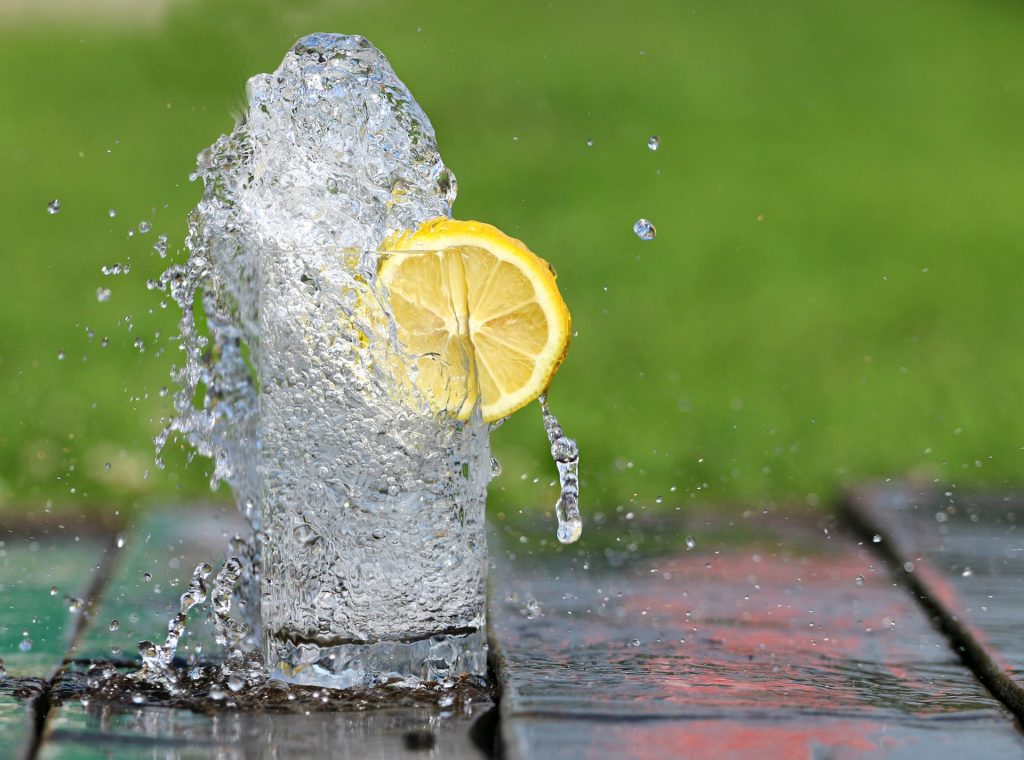You want to feel better. You’ve weaned off the sweets, booze, and all around lethargic behavior; however, you’re not really feeling all that … great. You start perusing the Internet for the latest diet fad, hoping for a quick fix to boost your dwindling energy and lose those leftover holiday pounds.
One of the latest trends, which has taken the wellness world by storm, is the Alkaline Diet.
Alkaline Water? For real?
Please. SOOOO not necessary. Plus, according to Stephanie Vangsness, R.D., L.D., of the Dana-Farber Cancer Institute and Brigham and Women’s Hospital, most municipal water supplies provide water with small amounts of alkaline anyway, so you do not need to purchase one of those ionizers to distort the pH of your H20.
Yes, of course Alkaline foods are good for you, but NEWSFLASH, not for the reasons the “experts” claim.

The Alkaline Diet – Fad or Fiction?
The alkaline diet claims to help your body maintain its blood pH level. Well, if you know anything at all about chemistry, you’ll realize right away that this claim is 100% false. Nothing you eat is going to substantially change the pH of your blood. It’s your body’s job to keep that level steady. If the pH of your blood was to shift, you would well … die. For those of you not familiar with body chemistry, here’s the Nikki’s Notes version on how pH works:
A “pH level” measures how acid or alkaline something is. A pH of 0 is totally acidic, while a pH of 14 is completely alkaline. A pH of 7 is neutral. pH levels differ throughout your body. Your blood is slightly alkaline, with a pH between 7.35 and 7.45 while your stomach is very acidic, with a pH of 3.5 or below.
The stomach must be this acidic so it can break down food properly. Food changes the pH of your urine, not your blood, depending on what you eat. This is how your body keeps your blood at an unwavering level.
That being said, it’s logical to assume, that since a diet high in acidic foods is going to affect the pH of your urine, you may encounter a problem with kidney stones in the future – so again, balance is key.

So what types of foods fall in to the acidic and alkaline categories?
Most fruits and vegetables, soy, and some nuts, seeds, and legumes are alkaline-promoting foods, whereas dairy, eggs, meat, most grains, and processed foods, like canned and packaged snacks and convenience foods, fall on the acid side.
Most alkaline diet promoters advise that you abstain from alcohol and caffeine as well. I, on the other hand, completely disagree! Why? Moderation. And health benefits, that’s why!
A glass of red wine, or a cup of coffee does not an acidic-ridden body make. In fact, a glass of red wine actually appears on Dr. Andrew Weil’s (MD) Anti-Inflammatory Food Pyramid. Mind you, that’s 1-2 glasses, not a bottle.

As for coffee, it’s one of the most potent antioxidants out there. One cup of black coffee per day will not cause you harm or cause your body to rebel against you. Here is a tip: add some cloves to your coffee and it will up the anti-oxidizing properties further.
So! My two cents in a nutshell: If you’re interested in trying something new, do your research. Find out which items are being promoted, and why. Focus more on adding healthier options (like more plants!) into your diet rather than obsessing about things you’re trying to avoid. If you follow A then B will naturally occur . . .
Here’s one of my favourite balanced, plant-forward recipes:
Lentils & Pineapple & Greens, Oh My!
Serves 2 | Approximately 30 minutes to prepare
- 1/2 cup dry green lentils, soaked overnight
- 1.5 cups + 4 tablespoons homemade or low sodium vegetable broth
- 1 large shallot, minced
- 3 cloves of garlic, minced
- 1 teaspoon extra virgin coconut oil for frying
- 1 cup diced Pineapple
- 1 teaspoon fresh grated ginger
- 4 cups baby spinach, chopped
- fresh ground pepper & sea salt to-taste
- fresh Italian parsley, chopped (for garnish)
Method of Madness:
Cook the lentils in broth. Bring to a boil, reduce to a simmer, and cook for 15-20 minutes until nearly all of the liquid is absorbed. Remove from heat and set aside.
Sauté shallot and garlic over medium heat until translucent. Add pineapple, 2 tablespoons broth, and heat until liquid starts to boil. Reduce heat to a simmer, and cook until the pineapple softens. Add ginger and stir. The pineapple and ginger will add a nice zing to the broth.
Add spinach plus another 2 tablespoons of broth and stir. Cover and cook for 1-2 minutes until spinach is steamed.
Spoon lentils onto serving plates, top with sauté, and season with salt and pepper to-taste.
Serve alongside a mixed green salad.

Holistic Health Disclaimer: All information and services provided by Veganomical Living are at all times restricted to consultation on the subject of health matters intended for general well-being and not meant for the purposes of medical diagnosis, treatment or prescribing of medicine for any disease, or any licensed or controlled act which may constitute the practice of medicine.


